Toyota RAV4 Spare Tire Guide
Using your spare tire is not always a straightforward process.
There is no standard location on cars where the spare tire is mounted. It could be under the car, inside the car, or even mounted on the rear door. All these locations require different removal methods too.
We’re going to explain and demonstrate the spare tire location on the RAV4 for all models, so you won’t be left guessing. By the end of this article, you’ll know the simple steps you need to take to find and remove it.
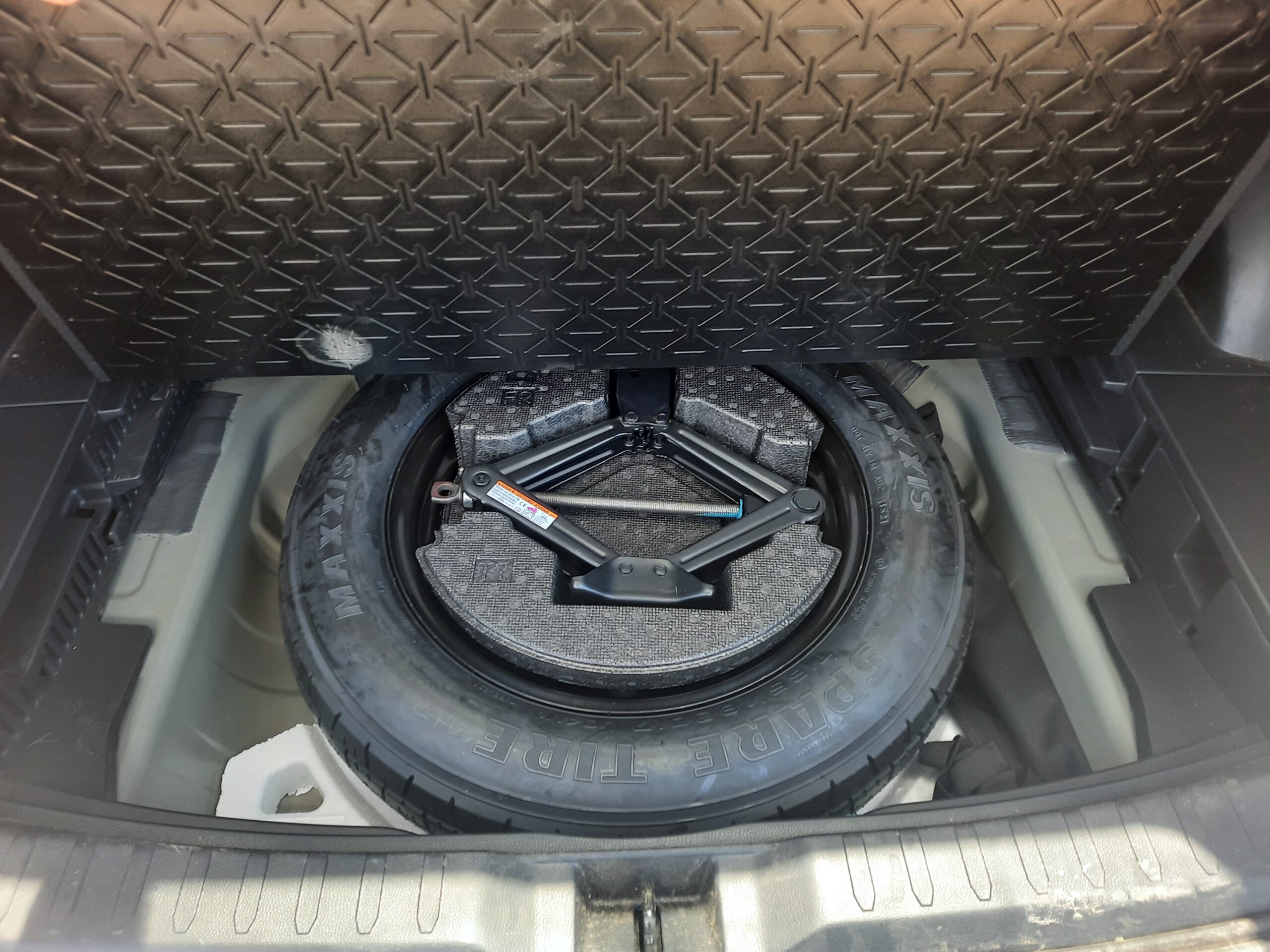
Where It’s Located
It’s important to know where your spare tire is located so you can be fully prepared to use it. It’s also essential to inspect your spare tire regularly to make sure it is in good condition (we’ll talk more about spare tire maintenance towards the end of this article).
There are two different possible locations of your RAV4’s spare tire:
- Underneath the rear cargo area (2013-2024 RAV4s)
- Attached to the exterior of the rear door (1994-2012 RAV4s)
I’ve written instructions for removing the spare tire for different model years of the RAV4. Keep reading to learn more!
How to Remove It
You should be familiar with how to remove and install your spare tire in case of an emergency.
The removal process is different depending on how old your RAV4 is, so I’ve written instructions for every model year.
2013-2024 RAV4 Spare Tire Removal
If your RAV4 is 2013 or newer, the spare tire is hidden underneath the rear cargo area.
Follow the steps below to remove the spare tire on a 2013-2024 Toyota RAV4.
Step 1
Clear items from the rear cargo area.
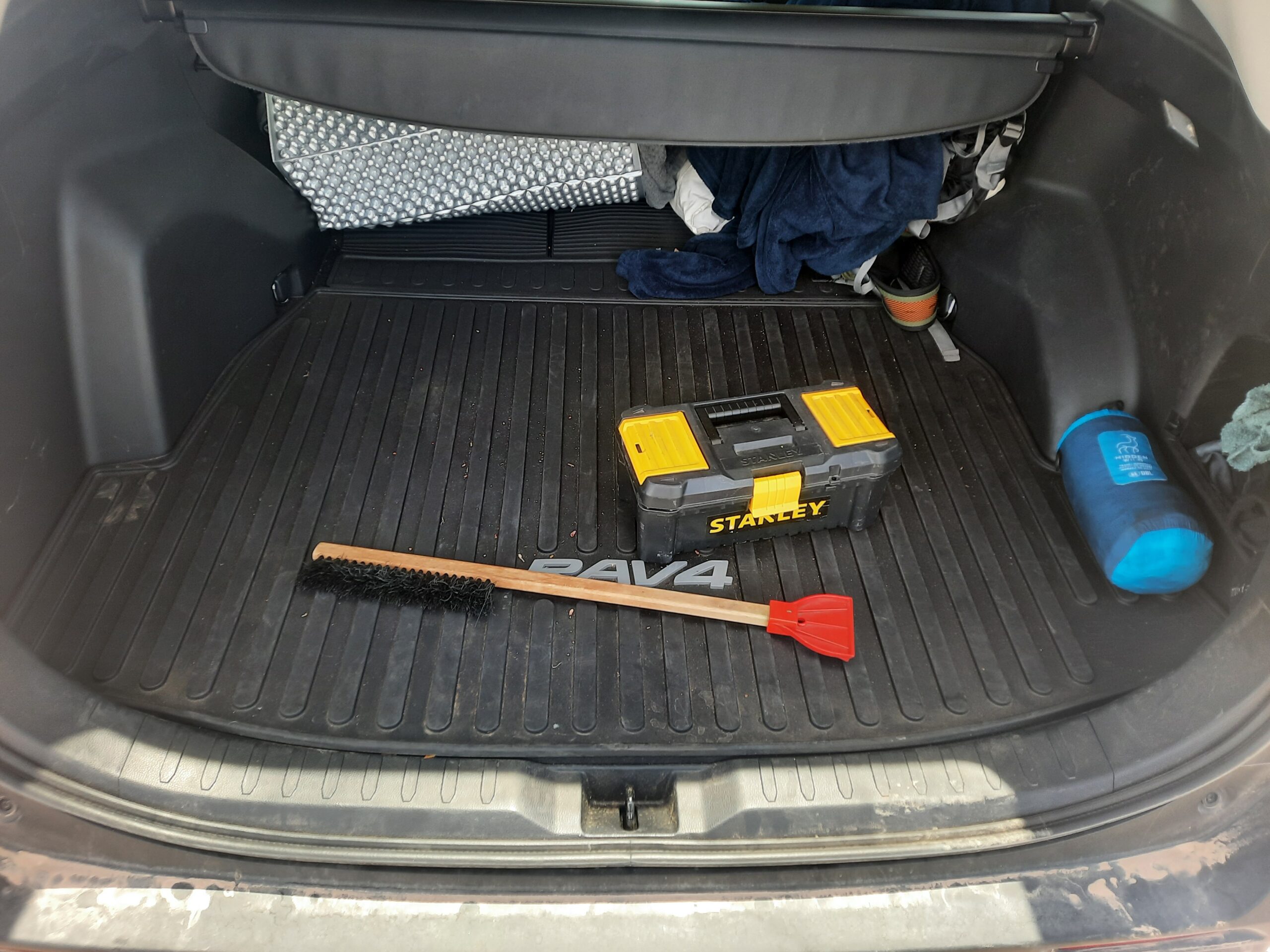
Step 2
Locate the fabric handle and lift up the rear cargo floor to reveal the spare tire.
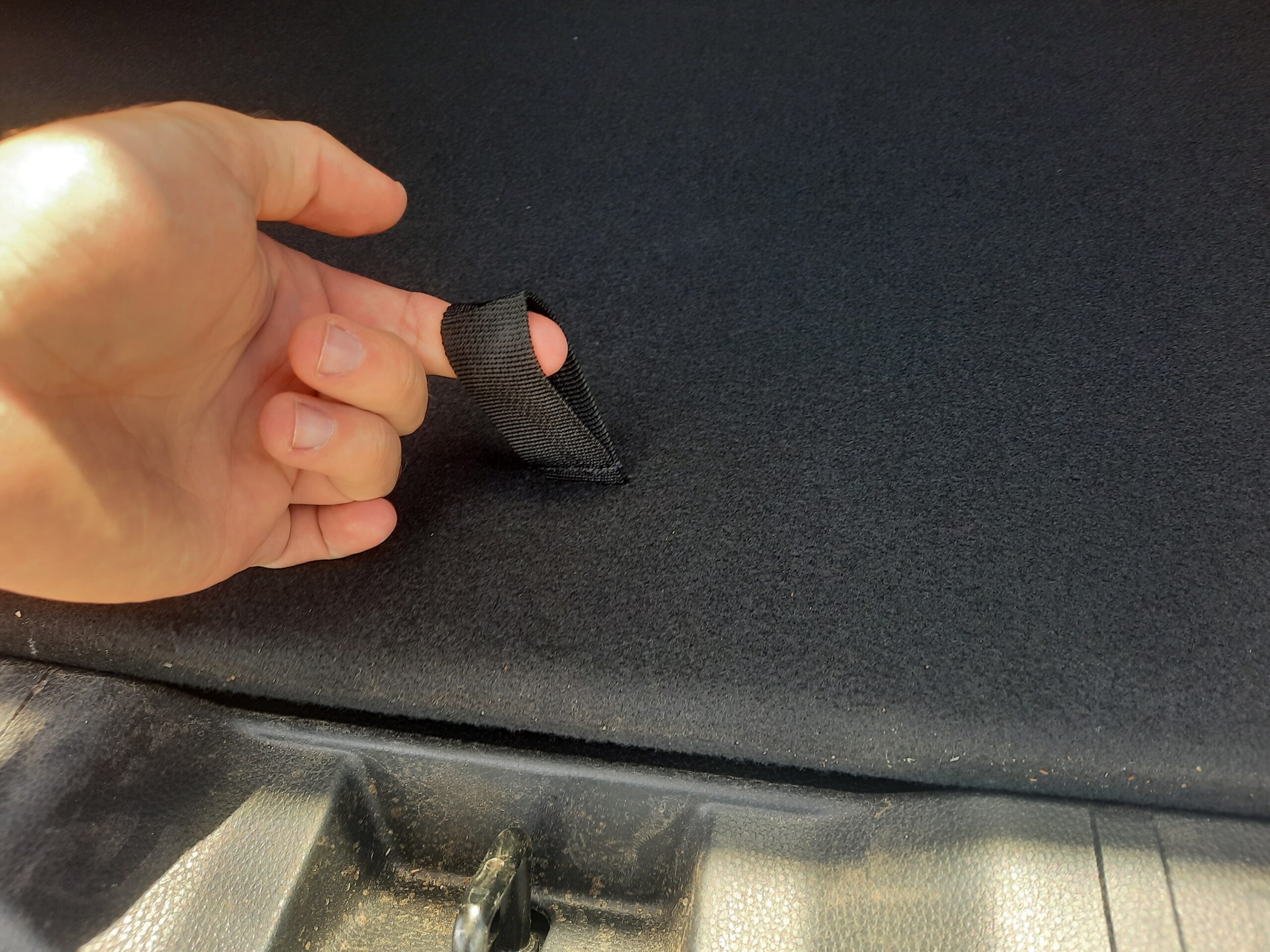
Step 3
Remove the spare tire from the rear cargo area and replace the rear cargo floor.

1994-2012 RAV4
If your RAV4 is 2012 or older, the spare tire is mounted on the exterior of the rear door and protected with a cover.
Follow the steps below to remove the spare tire and cover on a 1994-2012 Toyota RAV4.
Step 1
Open the rear door and unlock the latch handle on the bottom of the spare tire cover.
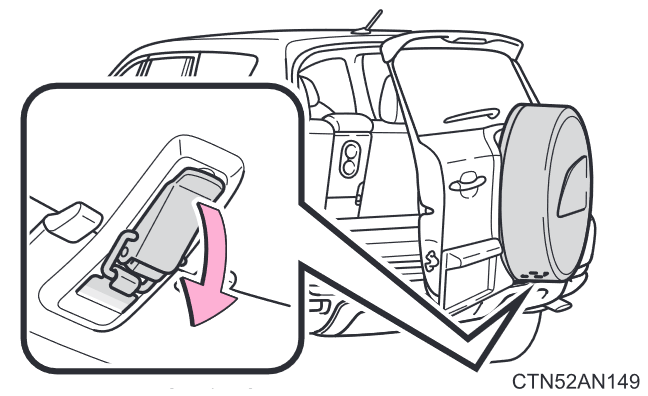
Step 2
Close the rear door, then remove the cover by lifting it up and away from the vehicle.
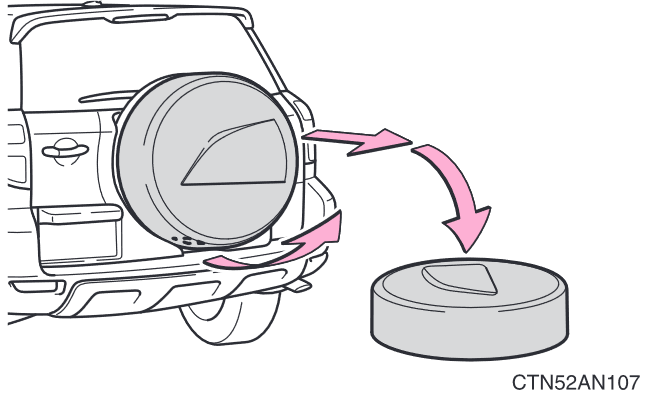
Step 3
Loosen and remove the spare tire wheel nuts, then remove the spare tire from the vehicle.
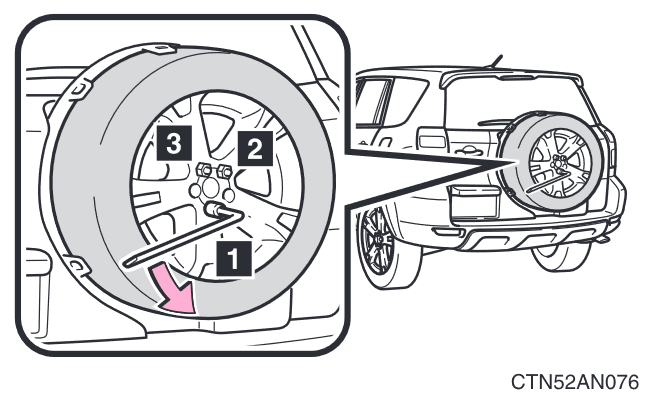
Tire Size
Perhaps you’re curious how large the spare tire is or you may even need to order a replacement.
The spare tire sizes on RAV4s will vary. An older RAV4 with a rear-mounted spare will carry a full-size tire, while newer RAV4s will have a small, temporary spare tire.
Here are the spare tire sizes for the Toyota RAV4:
- 2013-2023 Toyota RAV4:
The spare tire size varies slightly depending on the size of your wheels. Common sizes are:- T165/80R17 104M
- T165/80D17 104M
- T165/90D18 107M
- 1994-2012 Toyota RAV4:
The spare tire will match the size of the vehicle’s stock tires.
Check your owner’s manual under the “specifications” section to learn more.
If you’re not sure what these numbers and letters mean, read this article explaining tire sizes.
Care and Maintenance
Earlier in this article, I mentioned that it is important to inspect your spare tire regularly. I recommend doing this every six to twelve months.
If you’re in an emergency situation where you have a flat or damaged tire, you’ll want to be sure that you can rely on the spare tire. This is why spare tire maintenance is so important!
Let’s talk about a few easy measures you can take to make sure your spare tire is in good condition.
1. Check the Air Pressure
The most common problem with the spare tire is low air pressure.
The spare tire may slowly lose air over time. The air pressure will also vary when temperatures change.
If your spare tire does not have the correct air pressure, you won’t be able to use it. This means you may have to call an expensive tow truck instead of simply using the spare tire.
The air pressure can be checked with a tire pressure gauge. A tire pressure gauge is important to have on hand in general. Your RAV4 will also show a low tire pressure indicator on the dashboard when it is critically low.
2. Look for Signs of Aging and Damage
Next, you’ll want to check your spare tire for signs of aging and damage.
This is more of a concern with RAV4s that are 2012 or older since the spare tire is mounted on the exterior of the vehicle and is more susceptible to the elements.
The most common signs of an aged or damaged spare tire include:
- Cracks
- Dry, brittle rubber
- Bubbles
See below for examples:
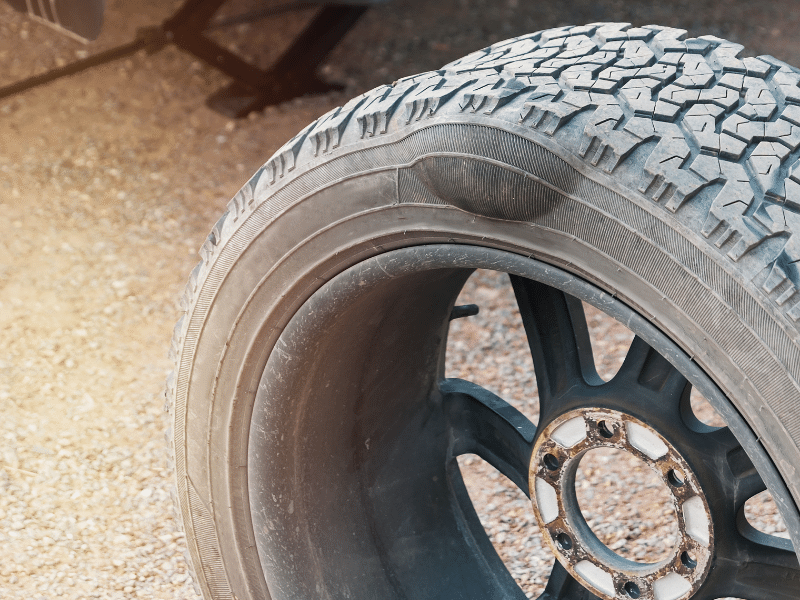

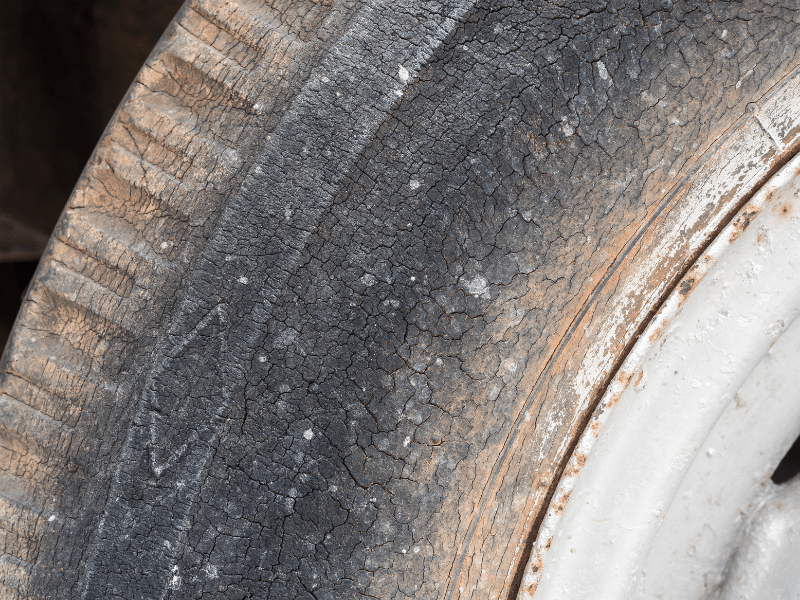
Be sure to check your spare tire every six to twelve months to make sure it is in operable condition!
Key Points
You should always be prepared to use your spare tire. You never know when you might need it!
As we mentioned, the RAV4 spare tire is located either on the rear door or under the trunk floor, depending on your model year.
Removing it is quite simple and only requires a few steps once you know where it is located. We recommend practicing the removal of the tire so you can be prepared for an emergency situation.
Be sure to inspect your spare tire regularly for signs of low pressure, cracks, and bubbles.
Have you ever had to use your spare tire? Let us know in the comments!
